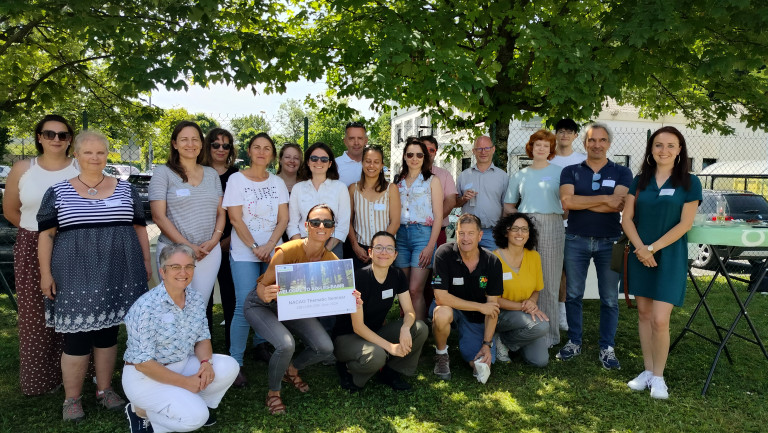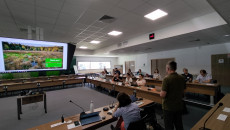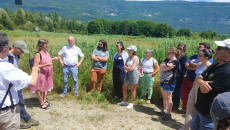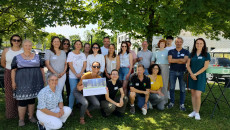
III Thematic Seminar NACAO -THEY TEACH – HOW TO SAVE FORESTS
How can peatlands regulate the climate? By what methods do experts capture carbon dioxide from the atmosphere or industrial emissions before it enters the atmosphere? And how do they store it? How do they save dried-up wetlands and why? These were the experiences shared by the participants of the NACAO project’s three-day seminar III, which ended in France in Aix-les -Bains. Participants included our staff from 2 departments: Regional Development and Agriculture, Climate and Environment of the Marshal’s Office of the Świętokrzyskie Region.
The 3rd Thematic Seminar began on Tuesday, with participants from different European countries presenting proven methods related to reducing greenhouse gas emissions. They exchanged best practices, concerning green (shrub willow plant cuttings and their products) and blue carbon: ‘III International Thematic Seminar for Exchange of Experience on Green and Blue Carbon initiatives and instruments’. They also shared experiences on how to capture and store carbon dioxide from the atmosphere or industrial emissions before it enters the atmosphere and how to restore biodiversity on degraded land. The event was combined with study visits and a Steering Committee meeting of the international project ‘NACAO – Nature-based Carbon Offsets.
TACKLING DROUGHTS AND FLOODS
As part of the seminar, participants visited a wetland in the Savoie and Marais de Chautagne in Ruffieux, where biodiversity has been successfully restored. Drains were applied to the plot in the 1930s to prevent fires. Unfortunately, they dried up the marsh too much. The falling water level has influenced some plant and animal species to disappear. The project revitalised 60 hectares of Chautagne biodiversity. The work included blocking drainage channels, allowing water to infiltrate into the soil. This reduced the velocity of the stream, which in turn reduced future threats such as floods and droughts in the region.
HOW TO SAVE THE FORESTS?
On Wednesday, participants looked at a second project in the Bauges Nature Park near Les Déserts. The aim of the project was to increase the resilience of the forests and their adaptation to new climatic conditions. The forests will be exposed to progressive droughts and a greater likelihood of fires. Therefore, peatlands in forested areas deserve special attention, not only because they are important water reservoirs, but also because they store carbon and reduce its emission into the air. It is estimated that, on average, they store thousands of tonnes of carbon per hectare worldwide. Participants in the study visit to Bauges Nature Park learnt about the good practices used in the area to make forests more resilient to extreme weather.
The study visit was attended by Jacek Koba, regional stakeholder from the Regional Directorate of State Forests in Radom. He discussed two projects that are good practices on carbon sequestration by forest ecosystems: ‘Forest Carbon Farms’ and “Forests for Wetlands”.






